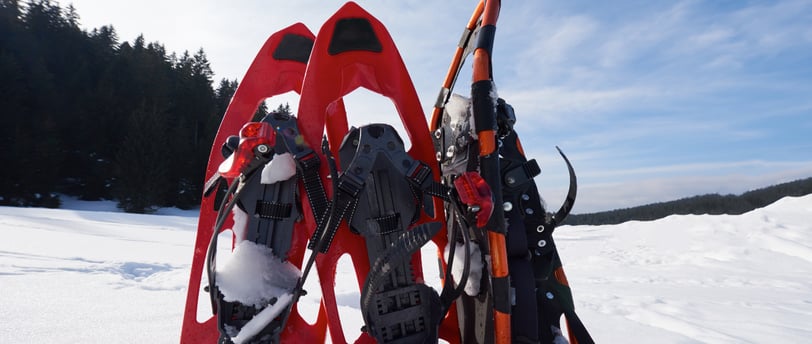6 Things to Consider When Choosing the Right Snowshoes
HIKING & CAMPING GEAR
3/22/20242 min read


Choosing the right snowshoes can make all the difference between an enjoyable winter adventure and a frustrating slog through the snow. With a wide variety of styles, sizes, and features available, it's essential to know what to look for when selecting the perfect pair. Whether you're a beginner or an experienced snowshoer, here are some key factors to consider to ensure you find the right snowshoes for your needs.
Type of Terrain: Consider the type of terrain you'll be snowshoeing on most frequently. Different snowshoe designs are optimized for specific conditions, ranging from flat, groomed trails to steep, backcountry terrain. If you'll be exploring varied terrain, look for versatile all-around snowshoes with aggressive traction and durable construction.
Size and Weight Capacity: Select snowshoes that are appropriately sized for your body weight and the weight of any gear you'll be carrying. Most snowshoes are available in different sizes to accommodate varying weights and snow conditions. Be sure to check the manufacturer's weight recommendations and size charts to find the right fit for you.
Bindings: The bindings are what secure your feet to the snowshoes, so it's essential to choose ones that are comfortable, secure, and easy to adjust. Look for bindings with ample padding and adjustable straps that can accommodate different boot sizes and styles. Quick-release buckles or boa closure systems can make it easier to get in and out of your snowshoes, especially in cold weather.
Traction: Traction is crucial for maintaining stability and grip on icy or steep terrain. Look for snowshoes with aggressive crampons or cleats underneath the footbed and along the edges to provide maximum traction in slippery conditions. Additionally, consider whether you'll need additional traction devices, such as heel lifts or crampons, for steep ascents or traverses.
Frame Material: Snowshoes are typically constructed from aluminum, plastic, or composite materials. Aluminum frames are lightweight and durable, making them ideal for backcountry use. Plastic frames are more affordable but may be less durable and prone to flexing in extreme conditions. Composite frames offer a balance of weight savings and durability but may come at a higher price point.
Additional Features: Consider any additional features or accessories that may enhance your snowshoeing experience. Some snowshoes come with features like heel lifts for climbing steep slopes, integrated flotation tails for added versatility in deep snow, or modular bindings that allow you to switch between different footwear.
By considering these factors and choosing snowshoes that are well-suited to your specific needs and preferences, you can enjoy a comfortable and enjoyable snowshoeing experience all winter long. Whether you're exploring groomed trails, venturing into the backcountry, or enjoying a leisurely stroll through snowy woods, the right snowshoes will help you make the most of your winter adventures.

